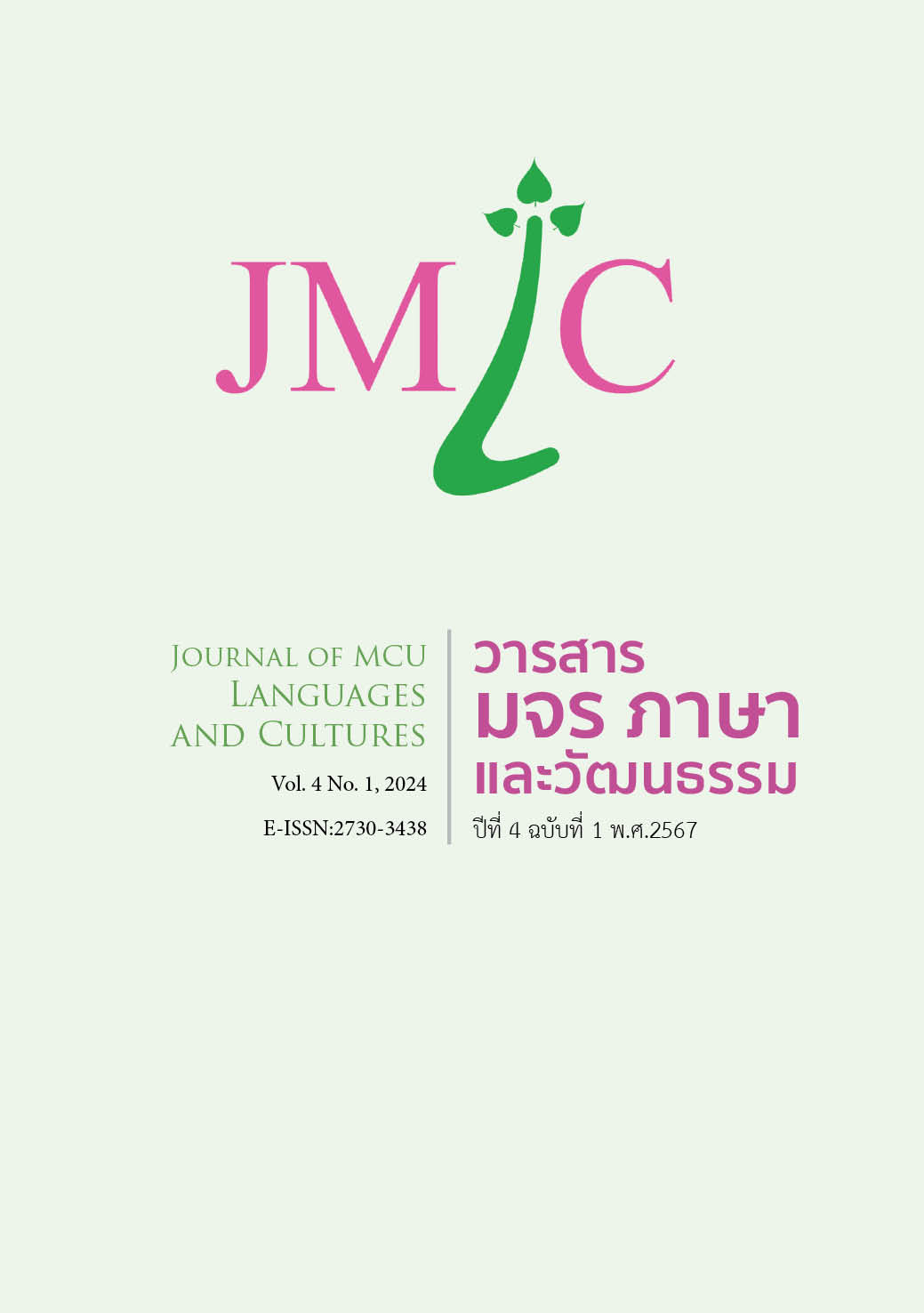A Study of the Wa-LaWa Origin and Orthography
คำสำคัญ:
Early Home, Wa-LaWa, Migration Route, Language Studyบทคัดย่อ
The absence of Wa-LaWa terms in any written records makes it extremely difficult to provide an authentic account of the Wa people. During the period of our study, the Wa-LaWa did not form a homogeneous group with a single culture. Instead, they were divided into a large number of sub-tribes, each with varied customs and dialects. Hence, this paper attempts a comparative study of ethnic tribes to shed light on the early homeland of the Wa. Additionally, the Wa-LaWa people are a minority ethnic group living in Southeast Asia. They are considered the original inhabitants of mainland Southeast Asia and refer to themselves as Wa or LaWa. Most Wa people reside in Myanmar and China, with some LaWa villages found in Thailand as well. However, the majority of Wa communities are located in Myanmar. Geographically, the Wa people inhabit the region between 22½ and 23½ degrees north latitude and between 98½ and 94½ degrees east longitude. Finally, the Wa-LaWa people typically inhabit mountainous areas, with most of their villages situated on hilltops. As a result, transportation and communication are particularly challenging for the Wa-LaWa people in remote areas.
เอกสารอ้างอิง
Aye Nwe. (1994). Wa mission in Shan State. (Bachelor's thesis). Myanmar Institute of Theology, YanGon University Press.
Aye Kyaw. (2004). Burmese sources for Lan Na Thai history. JSS Journal of the Siam Society, 73. Bangkok, Thailand: Bang Kok.
Diffloth, G. (1980). The Wa Languages. Berkeley: Department of Linguistics, University of California.
Ko San Lwin Group. (1962). The State of Wa People. MyaWady Magazin. YanGon.
Moe Moe Oo. (n.d.). A study of Palaung and Orthography. Mandalay University Research Journal, 9(1).
Mitani, Yasuyuki. (1978). Phonological studies of Lawa: Description and comparison (Doctoral dissertation). Cornell University Press. Presented to Andre G. Haudricourt, ed. Suriya Ratanakul, David Thomas, & Suwilai Premsrirat. (1985). Bangkok: Mahidol University Press.
Ratanakul, S., & Ratanahongse, L. D. (1985). The phonology of Lawa. In S. Ratanakul, A. G. Haudricourt, D. Thomas, & S. Premsrirat (Eds.), Southeast Asian Linguistic Studies Presented to André-G. Haudricourt. Institute of Language and Culture for Rural Development, Mahidol University.
Schiller, Eric. (1985). An (initially) surprising Wa language and Mon-Khmer word order. UCWIPL, 1, 104.
Kaw, Tax. (2002). Wa language for beginners. PanSan, PangKham: WA Lectures Society.
Tin Yee. (2004). The socio-economic life of the "Wa" national. (Bachelor's thesis). Yangon: National Center for Human Resource Development, RanGon University Press.
Thomas, David D. (1964). A survey of Austroasiatic and Mon-Khmer comparative studies. Mon-Khmer Studies, 1. Chicago: California State University.
Wa State History Committee. (2017). Wa History, (Vol. 2, History Book V.2). Myanmar: RanGon, Khin Myat tu Sa pe Press.
Interview with Ta Ai Kyaw, B.A., Linguistics, Yangon University, by Phuong Recorder, January 2, 2023.
ดาวน์โหลด
เผยแพร่แล้ว
รูปแบบการอ้างอิง
ฉบับ
ประเภทบทความ
สัญญาอนุญาต
ลิขสิทธิ์ (c) 2024 วารสาร มจร ภาษาและวัฒนธรรม

อนุญาตภายใต้เงื่อนไข Creative Commons Attribution-NonCommercial-NoDerivatives 4.0 International License.






